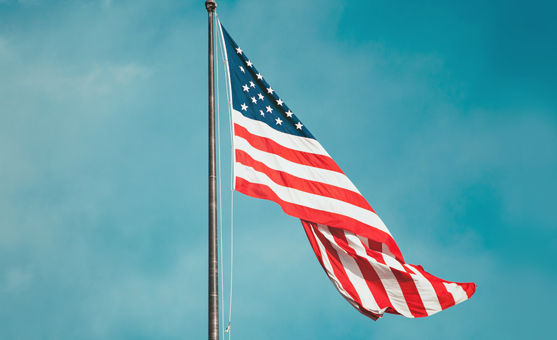Several thousand life producers will soon pay close to 300% more for their errors and omissions (E&O) insurance with more exclusions than before because of a poker game-like chain of events between the Canadian Association of Insurance and Financial Advisors (CAIFA) and its insurance broker.
CAIFA has had an E&O plan in effect for its members for the past two decades. This January, however, some brokers were left wondering whether or not they were insured as the association replaced its E&O broker and insurer.
Its broker for the past 20 years, Barber, Stewart, Mcvittie and Wallace (BSMW), and St. Paul Fire and Marine, its insurer for ten years, were replaced by AON Reed Stenhouse and Employers Reinsurance Corporation (ERC).
As well intentioned as CAIFA may have been, many producers questioned what went wrong.
A lot of brokers expressed their anger and dismay. The Insurance Journal found at least one broker who lost his license when, through a random audit, the Financial Services Commission of Ontario (FSCO) discovered he was incapable of proving that he had adequate E&O coverage.
There was speculation by brokers that CAIFA could have prevented this situation and maintained lower costs in coverage if it had just stayed with its current broker and insurer.
CAIFA responded that it negotiated the new E&O contract in good faith, and that the new plan, though criticized as inferior and too costly, is the best plan for the price in the market. A market, it said, that has changed dramatically since last year.
Until recently, the Chair of the association was Jim Rogers. He explained that if CAIFA had properly communicated the developments and the reasoning behind them, brokers would have been a lot less upset.
“Because of the way we have handled the communication of this, you could easily conclude that we have something to hide,” said Mr. Rogers “What we should have done is say ‘we do not have the provisions of the coverage finally settled, we have the premiums settled, we have the carrier settled, the coverage is in place, we are trying to improve it to the best level possible, and we are continuing that.’”
“Had we said that,” Mr. Rogers continued, “then we wouldn’t have had anywhere near the amount of speculation that we had, or the innuendos, or the cheap shots and the rest of it. We made a mistake in terms of being less forthright as to the reason for the delay, because the reason itself is entirely innocuous.”
In the beginning
The series of events began mid-2000 when CAIFA felt it could increase revenues through more members joining the plan. It therefore examined the business strategies of different brokers. BSMW was also invited to participate.
Fraser Mills, Legal Counsel at CAIFA and the person charged with managing the E&O project, said that of the four brokers that participated, which included BSMW, AON was chosen based on its presentation. “AON stood out head and shoulders over Barber Stewart,” he explained. “I think that it was reasonable and good business practice to see what the marketplace had to offer after being with the same broker for over 20 years.”
Glenn Wallace, Principal Partner with BSMW, said he doesn’t fully understand why his company was fired from its duties as E&O broker for CAIFA. Mr. Wallace stated that there were no complaints, and that the St. Paul plan for CAIFA was competitively priced and the most inclusive. He denied that there was a bad claims experience, saying that the plan was profitable for the insurer, and that CAIFA was reaping $400,000 per year as sponsor and administrator.
In Mr. Wallace’s view, BSMW’s replacement was simply a matter of CAIFA wanting a bigger broker.
Steve Howard, CEO and former COO for CAIFA, explained that AON presented a better strategy for marketing the organization’s plan and expanding its membership. He concurred that one motivation behind the bid competition was to try to increase the number of plan participants. Mr. Rogers added that it was felt the commissions paid were in excess to the level of service provided.
Mr. Wallace defended his company’s performance, stating that the number of participants in the CAIFA-sponsored plan has increased in the last seven years, from 2,900 in 1993, to 8,800 in 2000. That growth rate is even higher in real terms if the 3,000 members who have left the organization over the years is taken into account, noted Mr. Wallace.
These figures are confirmed by a January 2001 CAIFA board briefing document prepared by Mr. Howard and obtained by The Insurance Journal. The board briefing is a “restricted document, for distribution to CAIFA’s board of directors, chapter leaders and staff,” as indicated on the front page.
It, along with other board briefings, became accessible to The Insurance Journal when Mr. Rogers posted a message on the For Advisors Only chat list leaving in it his password to the secure area for the board of directors on CAIFA’s website.
The For Advisors Only chat list is a discussion forum for participants in the financial services and insurance sectors.
The January 2001 CAIFA board briefing document supported Mr. Wallace’s claim. It stated: “CAIFA’s net membership numbers declined over the course of the last year. On March 31, 2000, there were 16,167 active members. By October 31, 2000, when we launched our active retention and recruitment strategies, our membership stood at 15,352. As of Dec. 31, 2000, the number of active members is 15,303.”
The document added that there was an “expected attrition rate of about 2000 members, an historical average for our industry”.
Play by play
Through extensive interviews with the players involved, and with the information contained within CAIFA’s board documents, The Insurance Journal has compiled a detailed chronological report on the events leading up to the end of January 2002.
Mid- 2000
“The CAIFA fiasco,” as many producers called it, started as early as 2000.
CAIFA’s January 2001 board briefing situates what happened: “Over the last several years the number of people purchasing the E&O coverage has been increasing. CAIFA believes that the increase in purchase of E&O could have been greater. There is no study to substantiate this belief.”
“CAIFA decided to see what could be done to improve the plan to increase the number of insureds, and to increase the revenue to CAIFA. Five brokers, including BSMW, were asked for their proposals.”
“Based on the proposals of brokers it was determined that the services offered by AON and the plan enhancements proposed by AON were the best for the insured. St. Paul was to remain as insurer.”
November 2000
The same January 2001 document continued: “In November of 2000, CAIFA wrote a letter to St. Paul indicating that the broker of record was to change from BSMW to AON at the earliest possible date. BSMW objected on two grounds. Firstly, CAIFA did not have the authority to request the change of record on behalf of the insureds. Secondly, the insurer had entered into an agreement with BSMW, which stated, ‘St. Paul agrees not to entertain any other life agent broker professional liability program unless approached by BSMW and LUAC’” (LUAC, or the Life Underwriters’ Association of Canada, is the former name of CAIFA.)
“CAIFA would like to be insured with St. Paul and have as its agent, AON. The St. Paul does not clearly have the right to remove BSMW as the agent of record; the matter is in a holding pattern until this dispute can be settled. Rather than litigation, mediation has been proposed. The details of the mediation and in particular the timing have not been agreed. CAIFA has taken the position that it is not really part of the dispute, but will reluctantly join the mediation.”
The document also notes that AON was “asked to begin looking for alternative markets for the insurance coverages.”
Looking back, Mr. Wallace claimed that he was never given the chance by CAIFA to present a renewal offer because the association had already decided to deal through a bigger broker.
November 22, 2000
After being instructed by CAIFA to shift its business to AON, St. Paul initially refused, replying November 22 that the change of brokers was unacceptable. The letter stipulated that CAIFA did not have the authority to change brokers, or “issue a blanket statement for all certificate holders as your letter does.”
November 30, 2000
St. Paul apparently reversed its decision. A letter from St. Paul was sent to BSMW stated that the insurer would “commence transfer of the program [to AON] effective 12:01 a.m. on Monday, December 11, 2000.”
December 7, 2000
BSMW warned St. Paul and CAIFA that it had exclusive rights to CAIFA’s plan with St. Paul, and it would sue CAIFA and St. Paul if AON or any other broker took over the contract.
January 2001
The January 2001 board briefing noted that a path of mediation had been chosen rather than risk litigation. It read, “CAIFA has indicated that it will move if the matter is not resolved by the latter part of January 2001.”
March 2001
While AON searched for takers of the CAIFA E&O insurance plan, BSMW began a campaign to try to lure the organization back. According to Mr. Wallace, he approached Mr. Mills and offered to renew the St. Paul plan at a modest 10% price increase if, and only if, BSMW were reinstated as broker. The offer was repeated in July.
Asked why CAIFA did not consider the proposal, Mr. Mills and Mr. Howard replied that they never received an official proposal. “It was only hot air,” said Mr. Howard, “It never materialized.” Besides, he said, St. Paul was looking for a way to get out of the contract since it wanted to leave the E&O market.
The Insurance Journal was unable to verify if St. Paul pulled out of the market because St. Paul’s representative assigned to the plan, Brad Tamblyn, Vice-President for Regional Underwriting, said he was instructed to not comment on this issue.
Mr. Wallace claimed to have had a confirmation of willingness to proceed by St. Paul. Nonetheless, both advances were refused. Mr. Wallace stated, “They wouldn’t do it. Their response was that they would only deal with AON.”
July 2001
In July 2001, in preparation for a board meeting, an extensive board document was prepared by Mr. Mills. The document repeated the same background and reported on the latest developments.
“The E&O program was reviewed by an independent expert and it was determined that the basic coverage and the options provided, offer greater protection to its members than the submitted wordings of competing insurers,” stated the July 2001 board briefing for CAIFA.
The briefing also discussed the conflict between BSMW and the other parties going to mediation. At one point, the report reveals that BSMW offered to sell its CAIFA-related block of business at the cost of 1.5 times the annual commission. The decision to purchase was left in the hands of AON but, to all evidence, no deal was reached.
Other developments noted in the briefing included an offer by another insurer: Encon. “CAIFA has received an initial Encon offer. It would require every insured to take fraud coverage. It does not have the full coverages that the St. Paul plan has. Encon has priced it so that the average premium exclusive of CAIFA fees would have to be $525, assuming 8,000 insureds.”
“The initial Encon offer was rejected for the mandatory fraud coverage, the lesser coverages and the 25% increase in premium. CAIFA has sent them further information in an attempt to see if the premium can be lowered.”
The problem with asking Encon to improve on its offer was that the St. Paul wasn’t sharing information. The document explained: “The current insurer has refused to give CAIFA further information or to let a third party do a claim review. We have been told by the current insurer that the claims experience continues to worsen”.
“The change of broker situation is basically at an impasse. The situation may change when The St. Paul quotes on renewal. We are hearing that they will seek a 15% increase in premium.”
The “Next Steps” segment of the briefing laid out the plan of action, along with a contingency plan: “[We are] waiting a renewal quote from the current insurer to see if the premium is sufficiently close to that of Encon to allow a decision to be made on which insurer should have the plan. We are now expecting the renewal quote in July.”
“Otherwise,” the briefing continues, “just carrying on with the current broker, Barber Stewart, and the current insurer, The St. Paul until there is a non litigious way to get through the impasse.”
In a “proposed action” to the board, the report notes “It is recommended that the E&O insurance should remain available to non-members because they have fewer and less severe claims and therefore subsidize the members”.
October 2001
At the end of October 2001, CAIFA members received official notice from St. Paul that their coverage would end December 31, 2001.
When St. Paul gave a legal but scanty 60-day notice of termination, says Mr. Mills, the urgency of the issue began to boil over. The downturn in the market, the events of September 11, and the claims experience at CAIFA combined to greatly impede what had been initially cast as a fairly simple process of organizational renewal.
CAIFA announced that a replacement would be found by the end of November.
CAIFA announced only in late October that it chose AON as the organization’s new E&O broker.
November 30, 2001
At the end of November, Encon returned to the table with another offer, said Mr. Mills. At the last minute though, the company retracted, explaining that their reinsurer refused to provide backup to the plan proposed.
CAIFA announced that three insurers made proposals. The identities of the bidders were not disclosed.
December 5, 2001
December 5, members were asked to fill out an application to an unknown insurer for CAIFA sponsored E&O coverage. A letter from CAIFA noted, “Completion of the application does not obligate you to purchase the insurance but it does allow us the opportunity to begin the underwriting process for the new Insurer.” CAIFA stated it was “in the final stage of premium negotiation.”
December 14, 2001
An online message from CAIFA stated, “The pricing, terms and conditions, and the payment plans will be sent to you next Wednesday. In other words, you should have all information that you need by Wednesday, December 19, 2001.”
The message to members continued, “We have agreed with the broker that you will have insurance as long as we have received your application and it does not contain any disqualifying answer. … Next week, after you have received the information, you must advise us in writing if you do not wish to proceed with your application.” The insurer remained unknown.
December 19, 2001
Some five working days before the New Year, CAIFA advised ERC that they were the successful bidder for the contract. Rich Kasyjanski, Marketing Leader for ERC told The Insurance Journal, “By the end of January we should have everything signed, sealed, and published.”
December 20, 2001
CAIFA announced ERC as its new E&O insurance provider. Premiums were considerably higher (see table page 8), monthly payments unavailable, and exclusions still unknown.
Mr. Kasyjanski explained, “It was a distressed book of business. One of the reasons that we are stepping in on a rehabilitation mission operative is that we will have some money to help as we pay the losses and we make it better. We can go in and have the luxury of more premiums that will help us turn it around.”
Mr. Kasyjanski described the deadline for finalization of the plan as long past, saying it was “yesterday. A week ago. We are working to get that done.”
January 14, 2002
Another letter appeared on CAIFA’s website from Lee Raine, new Chair of CAIFA. Mr. Raines wrote, “Our final negotiating session with the broker and insurer will take place this Thursday, January 17. Immediately following this meeting, we will publish a detailed comparison of CAIFA’s new E&O plan and several competing plans.”
Participants werestill not made aware of the exclusions that might affect them.
January 21, 2002
CAIFA held a public Town hall meeting to explain the details of its current predicament. Full details of the plan were not revealed. Participants still did not know the full extent of their coverage. They were being told to pay the premiums by the end of January, or face automatic cancellation.
January 22, 2002
In an interview with The Insurance Journal, Mr. Mills and Mr. Howard said that the policy was completed, but that CAIFA was still negotiating for two more items. If those discussions were successful, CAIFA could then offer “exclusions to exclusions” on the current plan.
Repercussions
Many members are dissatisfied with this unfolding of events. A number of pejorative statements, guesses, and opinions were voiced, either online as with the For Advisors Only chat list, or in person. Mr. Mills’ voicemail was so swamped with queries that its message simply stated, “Please be patient, you already know all that there is to know.”
Conspiracy, misrepresentation, simple error, oversight, and mismanagement were conjectured by producers, with none sure who was right. There was even outright solicitation of members to join other plans, notably by MGA Albanese Financial Group and by pundits for the Independent Financial Brokers of Canada (IFBC). Mr. Rogers is not surprised by the solicitations, at least on the part of IFBC representatives. He categorizes the online promotion of that organization as “the usual IFBC rhetoric.”
The final repercussions are as yet uncovered. The Insurance Journal has learned that a class action suit and individual legal actions against the organization are being considered.
At the level of CAIFA’s gamble for more adherents to its plan, it remains to be seen if AON will indeed have the marketing force to overcome the exodus created when previous plan participants sought alternative coverage as back-up in case something went wrong.






